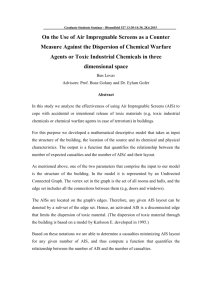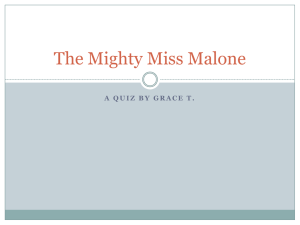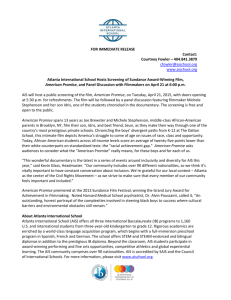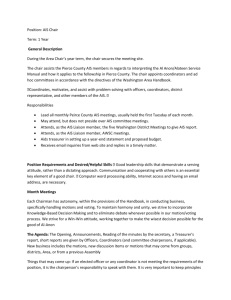michigan_foodwebworkshop_092408
advertisement
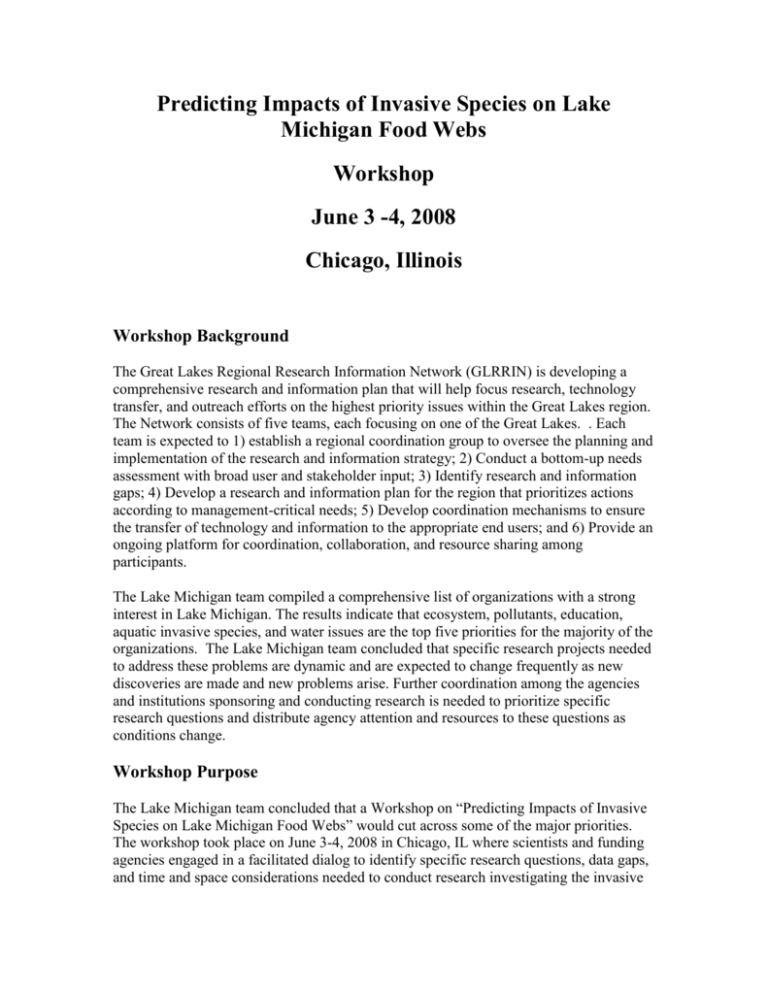
Predicting Impacts of Invasive Species on Lake Michigan Food Webs Workshop June 3 -4, 2008 Chicago, Illinois Workshop Background The Great Lakes Regional Research Information Network (GLRRIN) is developing a comprehensive research and information plan that will help focus research, technology transfer, and outreach efforts on the highest priority issues within the Great Lakes region. The Network consists of five teams, each focusing on one of the Great Lakes. . Each team is expected to 1) establish a regional coordination group to oversee the planning and implementation of the research and information strategy; 2) Conduct a bottom-up needs assessment with broad user and stakeholder input; 3) Identify research and information gaps; 4) Develop a research and information plan for the region that prioritizes actions according to management-critical needs; 5) Develop coordination mechanisms to ensure the transfer of technology and information to the appropriate end users; and 6) Provide an ongoing platform for coordination, collaboration, and resource sharing among participants. The Lake Michigan team compiled a comprehensive list of organizations with a strong interest in Lake Michigan. The results indicate that ecosystem, pollutants, education, aquatic invasive species, and water issues are the top five priorities for the majority of the organizations. The Lake Michigan team concluded that specific research projects needed to address these problems are dynamic and are expected to change frequently as new discoveries are made and new problems arise. Further coordination among the agencies and institutions sponsoring and conducting research is needed to prioritize specific research questions and distribute agency attention and resources to these questions as conditions change. Workshop Purpose The Lake Michigan team concluded that a Workshop on “Predicting Impacts of Invasive Species on Lake Michigan Food Webs” would cut across some of the major priorities. The workshop took place on June 3-4, 2008 in Chicago, IL where scientists and funding agencies engaged in a facilitated dialog to identify specific research questions, data gaps, and time and space considerations needed to conduct research investigating the invasive species impacts on food webs in Lake Michigan beginning in the 2010 field season. The primary purpose was to set priorities for an interagency field and modeling program that would take advantage of the large vessels that are scheduled to be in Lake Michigan in 2010 as part of the Cooperative monitoring Program. Topics discussed during facilitated dialogs included 1) what are the key research questions? 2) what are temporal and spatial scales needed to answer research questions? and 3) what are important data gaps? Workshop results would be used to guide funding considerations for NOAA, EPA, Wisconsin Sea grant Program, the Illinois-Indian Sea grant Program and other agencies. Workshop Conclusions The ability to make predictions about AIS impacts on Lake Michigan rely on modeling frameworks. There is a clear need to evaluate various modeling approaches and determine which approaches have proved effective in the past which are likely to be useful in the future, whether these approaches are still valid as ecological conditions change rapidly in Lake Michigan. There is a need to determine weak assumptions within models and to update the critical process inputs. Finally, researchers need to define what predictability models can provide, and assess what range of accuracy is acceptable. The need to link modeling efforts to management needs was also discussed. The number of tools a resource manager actually has available (e.g. harvest, stocking, loading, habitat restoration/protection) are fairly limited, and models should be developed or prioritized to predict impacts of regulations or policies that are actually at the decision maker’s disposal. There is a need to transpose science to mangers in a useful form. Adaptive models should be developed so they remain useful in an environment that is rapidly changing, and models should be developed quickly enough to provide a decision making tool in a reasonable time frame. The discussion highlighted the importance of long-term monitoring efforts, but at the same time indicated the need for more controlled research that can elicit mechanisms observed in monitoring efforts. Interdisciplinary research that integrates various data sets and research with links between hypothesis testing, data collection, and management needs will be most effective at providing accurate and meaningful predictions. Future work needs to build collaborations and linkages between monitoring, modeling, and management efforts. Finally, the importance of outreach and an enlightened public was highlighted as part of future research efforts. Three broad areas of importance emerged from discussions regarding predictions of the impact of aquatic invasive species (AIS) in Lake Michigan: 1) What controls the dispersal, colonization, and establishment of new AIS? 2) Managing AIS that are already in Lake Michigan. 3) Understanding how potential new AIS will impact Lake Michigan. Specific Research Needs Specific research needs for each area of importance include: 1) What controls the dispersal, colonization, and establishment of new AIS? Understanding the life history, trophic level, habitat needs, and effect on the food of potential AIS. What are needed inoculation rates, survival rates, and harmful levels of potential AIS? Are human induced habitat changes making Lake Michigan susceptible to new AIS? What are the key vectors for dispersal of AIS? How does climate change alter Lake Michigan susceptibility to AIS? How does the interaction between AIS and other stressors impact invasion success? What regions or habitats are most vulnerable to AIS invasions? What are weak spots in the Lake Michigan food web susceptible to AIS? What makes a system resilient to invasion? 2) Managing AIS that are in Lake Michigan 3) Understanding how potential new AIS will impact Lake Michigan What is the role of AIS in nutrient cycling? How do AIS impact fish production? How does climate changes impact key processes in the system and the impacts of AIS? How does the interaction of AIS with other stressors determine their impact? How do circulation patterns affect the impacts of AIS? How do AIS interact with the microbial food web? How do AIS impact contaminant flow or the spread of pathogens in Lake Michigan (e.g. avian botulism, VHS, toxic algae)? Which potential AIS are likely to have the largest impact on Lake Michigan? Has there been a genetic response of native organisms to AIS stressors? How does energy flow through AIS within the food-web (e.g. nutritional value of food available, who eats AIS, what do AIS eat)? Data Needs Some important data gaps toward predicting the impacts of AIS (current and future) include: Spatial gaps: Understanding nearshore to offshore linkages. Understanding the land water interface. Understanding spatial variation within a basin, between the northern and southern basins, and the importance of offshore reefs. Understanding variation within the vertical dimension of the water column. Temporal gaps: What is the natural, intrinsic variability of the system, in the short and medium term time scales? Understanding seasonal cycles of critical processes, especially during the winter isothermal period. What is the importance of episodic events?


